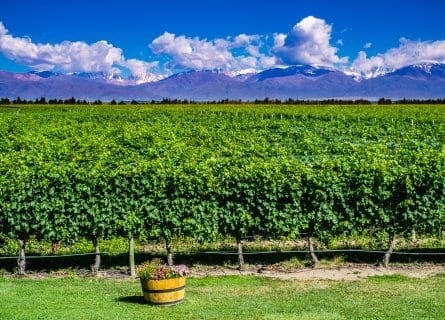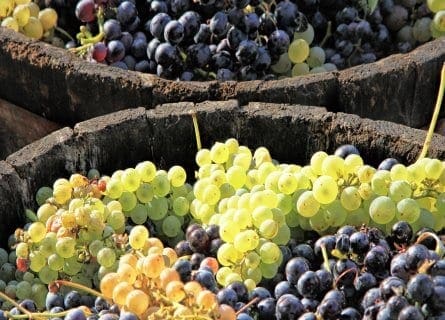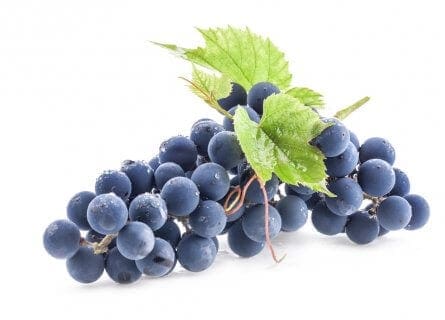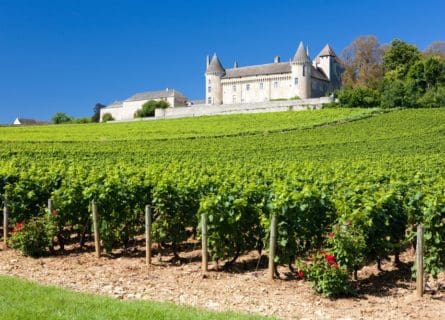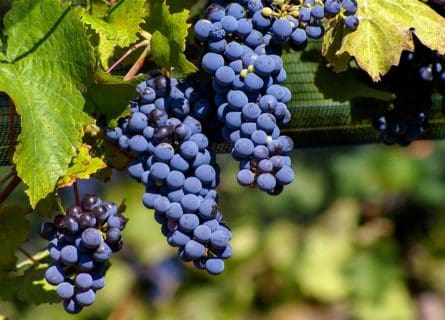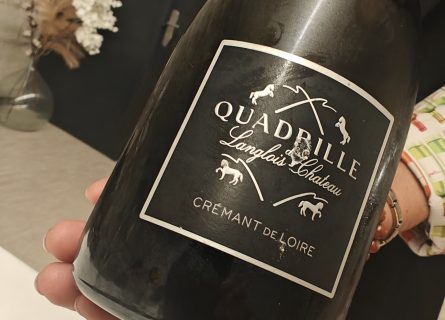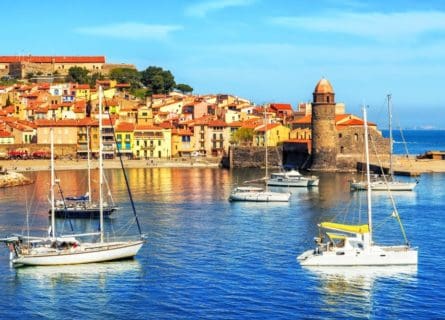Cahors Wine Region Guide
Discover Cahors: The Authentic Heart of French Malbec - Where Tradition Meets Elegance in Every Glass
EXPLORE ALL OUR SOUTH WEST FRANCE WINE REGION GUIDE
Last updated: April 4, 2025
Introduction
On the banks of the River Lot, the dynamic city of Cahors reveals a long-cherished secret. It is home to France’s last true bastion of the Malbec grape, a variety that has become widely associated with the valleys and mountains of Argentina. Yet there is much to recommend in French Côt: it offers chameleon-style ranges that encompass the deeply traditional wines of Clos de Gamot, the silky richness of Château du Cedre and Lamartine, and everything in between!
The finest Cahors are comparable (in quality) to the greatest Malbec wines made across the Atlantic, yet there are significant differences in structure, aromatic profile, and mouthfeel. So much the better for oenophiles who love diversity.
Discover More About French Wine
History
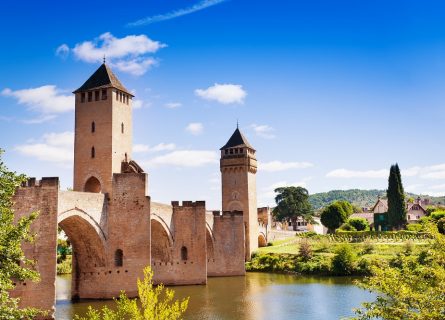
The so-called “Black Wine of Cahors” has been famous for its depth and longevity since the Middle Ages. Local vignerons are very fond of sharing an old tale involving a Hungarian merchant who introduced Côt, to use its regional synonym, in the 11th century.
Yet historians are sure that the Romans planted vines in the region of Quercy after their conquest of Gaul; at the height of the Western Empire, it competed with wheat for the title of Rome’s most important and lucrative agricultural crop. However, despite continued pressure to grub up vineyards and replace them with wheat, Emperor Probus did much to protect Cahors’ remaining acreage in the 3rd century AD.
Rival factions from the Frankish Merovingian and Carolingian dynasties fought for control over Quercy after the Western Roman Empire fell. This turmoil eventually led to the division of the region into feudal domains during the Middle Ages.
Meanwhile, Cahors caught the eye of the upper echelons of the Catholic establishment; Pope John XXII was an avid fan of this dark and potent wine that emigrated to Bordeaux in the 18th century. Indeed, it arrived in St-Emilion in the 1730s and was subsequently transported to the Medoc and the communes of Blaye and Bourg.
By the early 19th century, the variety made up about 60 percent of the vineyards in Bordeaux. Yet Cahors maintained its status as the seminal source of Malbec wine. It is said that the Russian Tsar Peter the Great was particularly fond of Cahors, even claiming that its medicinal properties cured his stomach ulcers.
Bordeaux merchants discovered a more practical and commercial application for Cahors wine: they blended it into the weaker claret vintages to increase their weight and alcohol content during the 17th and 18th centuries.
Unfortunately, phylloxera destroyed countless vineyards in the late 19th century, while the Languedoc stole its thunder as a key source of blending wine. The final nail in the coffin was the fierce winter frost of 1956, which ravaged the remaining vines.
However, the award of AOC status in 1971 gave winegrowers an impetus to revive their ailing region, planting new (less productive) clones and attracting the attention of global investors. Today, the busy town of Cahors finds itself packed with visitors in the summer, and many of those have come to experience the heady delights of French Malbec.
Geography and terroir
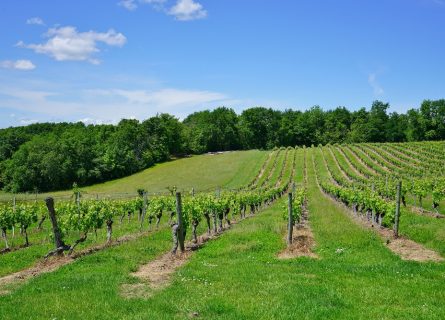
The beautiful vineyards of Cahors lie North of Toulouse and southeast of the Dordogne. They hug the banks of the River Lot for over 40 kilometers, with the most picturesque climats found to the west of Cahors town. Encompassing approximately 20 kilometers from north to south, the appellation is relatively small by the standards of Bordeaux.
Indeed, just 4,500 hectares of vines are planted in the zone today—at its zenith, Cahors could boast over 48,000 hectares. Still, quality is more important than quantity in the international market for premium wine; Cahors Malbec is starting to appear on wine lists and retail stores outside of France as sommeliers move away from the “Mendoza or nothing” paradigm.
Nonetheless, the region has a favorable climate for quality wine growing. Generally, summers are warmer than Bordeaux’s, with less rainfall due to the increased distance from the Atlantic coast. As a result, vineyard diseases are not a major issue in Cahors, and fungal attacks are almost unheard of.
Many producers have taken advantage of these benign conditions by converting to organic viticulture, as heavy doses of synthetic fungicides and pesticides are unnecessary in Quercy. This all bodes well for the late-ripening Malbec, a grape that requires great warmth and sunshine to reach optimal phenolic ripeness.
However, in very hot years like 2018 and 2022, a lack of water can be an issue in Cahors. A certain amount of hydric stress is good for the vine: it forces the roots to dig deep in search of moisture while building up greater sugar reserves in the berries. Yet severe drought can cause the plant to stop photosynthesis and, by extension, completely halt the ripening process. In such circumstances, emergency irrigation may become a necessity.
Cahors’ most famous climats (vineyard sites) are found on three alluvial terraces above the river, of which the upper two are the most highly regarded for their wine. Some of the appellation’s most fragrant Malbec is made from these sandy soils, covered in stone fragments that reflect heat back into the vine canopy.
However, the wines tend to mature very quickly, lacking the structure and power of Cahors’ best labels. This contrasts heavily with the stone limestone causses on the plateau, where the yields are much lower, and the wines have more tannic structure and depth.
Winemaking and regional classifications
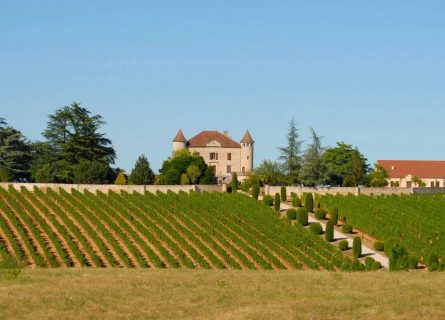
Producers in Cahors consider Malbec to be one of the world’s finest red grape varieties. Of course, that view is not shared by everyone. However, it can undoubtedly yield memorable and appetizing wine: complex, tannic, and aromatic.
Much will depend, though, on the quality of the clonal material—and, indeed, on the winemaking. According to the appellation rules, a small percentage of Merlot and Tannat can be included in the final blend; Merlot’s primary role is to soften the tannins in cooler years. Yet the regulations forbid the use of Cabernet Sauvignon and Cabernet Franc, which is rare in southwest France.
Winemaking philosophies and attitudes towards maturation, for instance, vary widely within the zone, although the AOC legally sanctions the primary grape variety. Chateau du Cedre desires ripe fruit and soft, silky tannins in its wines; long hang times are fundamental to the approach at the winery, with berries harvested when they are on the cusp of phenolic overmaturity.
Depending on the vintage, the winemaker may include a certain percentage of whole berries in the vat, although many estates elect to crush and destem all the fruit. A cold soak or pre-fermentation maceration can be used to extract color and tannin from the pomace; the technique is widely used today by winemakers in the Bordeaux region.
Fermentation will then commence. The choice between traditional oak vats, concrete, or stainless steel is highly personal: many prefer the temperature control offered by stainless steel, conducting a relatively slow fermentation below 75°F. Open fermentation with punch down is increasingly popular in Cahors, as it gives good color and flavor extraction. A post-fermentation maceration will mop up further tannins and soften those already present tannins.
This process will invariably be continued in French barrique, particularly if the winery is marketing a top-end prestige label. Like Cabernet Sauvignon, Malbec has a natural affinity with oak; the flavors of toast and vanilla can integrate seamlessly with the grape’s black fruit profile.
That said, much depends on the type of oak, the percentage of new wood used (if any), and the degree of toast. It is generally accepted that the better the grapes, the more oak the wine can sustain. Yet certain winemakers oppose using any new barrique, arguing that it overwhelms the wine and subjugates terroir character. Instead, they will age in used barrels, including larger 500-liter versions.
Facts & Figures
Key wine styles
- Full-bodied red wines
Appellation structure
- AOC Cahors
Hectares under vine
- 4500
Average annual production
- 3 million cases per annum
Approximate number of producers
- 250
The lowdown
In the mid-20th century, Cahors was a pale shadow of its former self; the area under vine had shrunk dramatically after the 1956 frost attacks, exacerbated by the dire economic circumstances of the period. So it is little wonder that many families, particularly the younger generation, left the region searching for a better life.
Yet the 1990s saw a role reversal of sorts, as Cahors attracted more than what seemed its fair share of investors – both French and international. Over the past two decades, they have transformed the appellation, building new wineries and hospitality centers and improving vineyard management.
Thus, wine styles have evolved, with a new category of super-concentrated wines lavishly seasoned in new oak. When tasted blind among a selection of premium brands from Mendoza and Cahors, it can be challenging to determine when France begins and Argentina ends.
However, there are enough substantial differences between Côt and Argentine Malbec to present Cahors as a worthy point of difference. Even today, the critical mass of French Malbec offers a more vigorous, tannic, and herbaceous interpretation of this versatile grape; traditional styles of Cahors still rule the roost in the appellation despite the appearance of some very opulent wines.
Nonetheless, some consumers may wonder if Cahors is starting to look better value than Mendoza Malbec. That is a very subjective topic; however, there is certainly no paucity of inexpensive and fruity Cahors wines to be drunk young. Meanwhile, the crème de la crème has a lovely intensity and balance, merging firm (but ripe) tannins with brightness and energy.
Today, there are clear signs that consumers beyond the borders of Quercy are more aware of Cahors and its singular wines. Listings are constantly growing, and critics and key influencers are on board. Forty years ago, it all looked a bit sad and humdrum in the vineyards of the River Lot. No longer: Cahors has become one of France’s stars in 2024, with more to come. Santé!
Key Grape Varietals
-
Malbec
Delve into Malbec, a dark, small grape native to France, cherished for its thick skin and exceptional flavors. 🍇🍷
Find out more -
Merlot
Merlot is the most cultivated grape in Bordeaux and closely related to Cabernet Franc
Find out more -
Tannat
Tannat, a robust grape from the Basque country, is famed for producing rich, rustic wines in Madiran, France, and has found notable success in Uruguay, where it's adapted to create softer wines. Central to Madiran AOC, it requires over 50% in blends, with modern techniques like micro-oxygenation used to enhance its approachability.
Cahors gastronomy
The winding streets of Vieux Cahors are densely packed with timber-fronted houses, galleried mansions, and excellent local restaurants. Uncomplicated rural cuisine is the name of the game in Quercy, often served in cozy kitchen-style dining rooms staffed by family members. Roast tarragon beef, seared slices of foie gras, and confit de canard are the perfect foil to a glass of plum-scented, delicious Malbec.
Wineries Recommendedc by Cellar Tours
Further Reading: Discover More Related Blog Content
More information
If you would like us to customize an exclusive luxury tour, contact us and let us know your travel plans. We offer luxury food and wine tours for private groups of a minimum two guests. In addition, all of our private, chauffeured tours are available year-round upon request.



